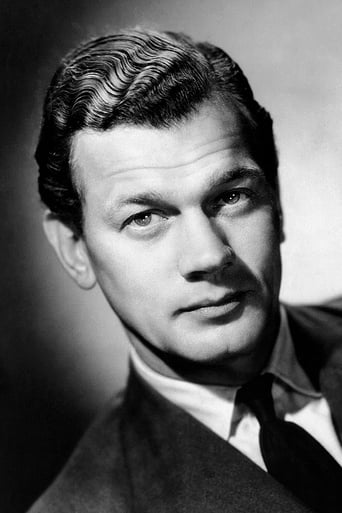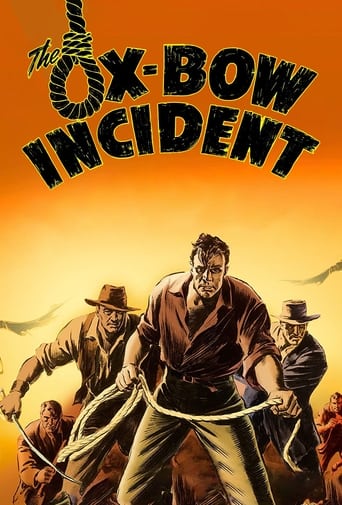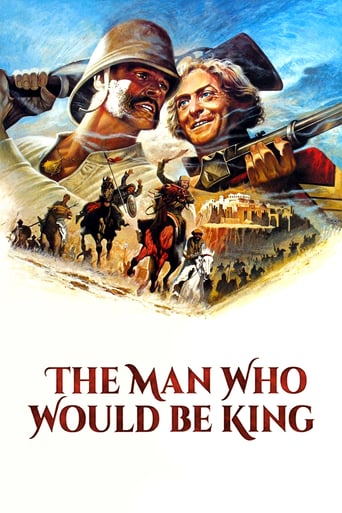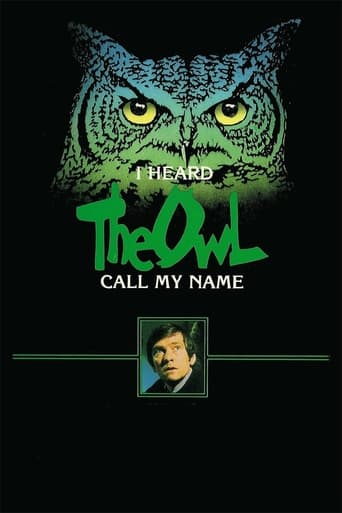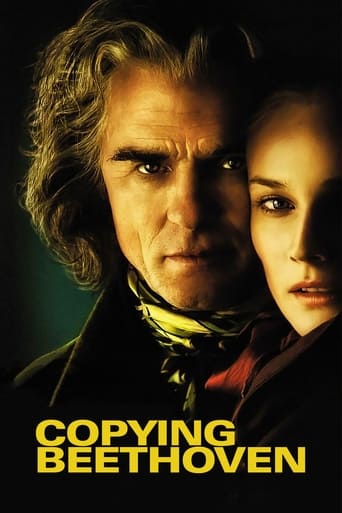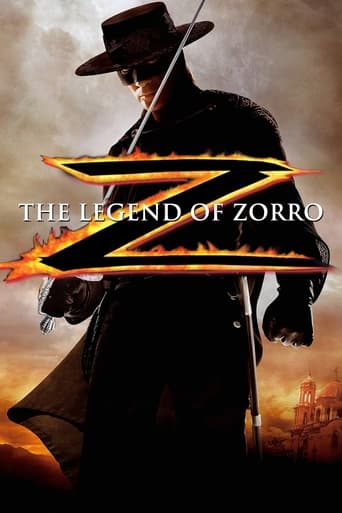Two Flags West (1950)
A group of confedarate prisoners is sent to a unionist fort in the west to help the local garrison to fight the indians.
Watch Trailer
Cast
Similar titles
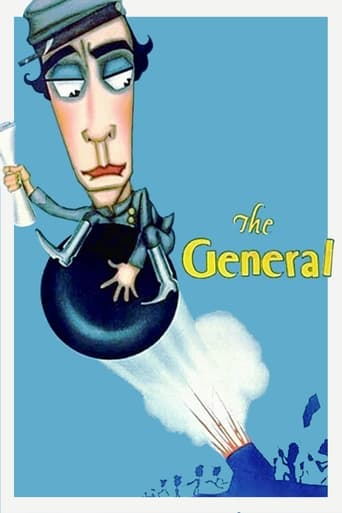
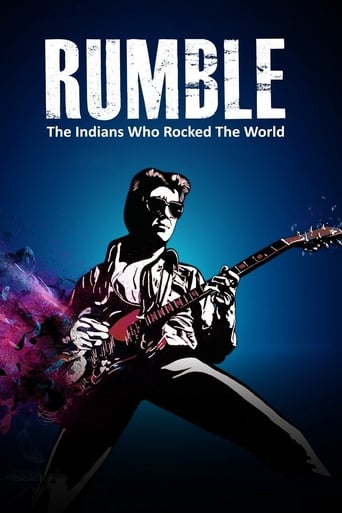
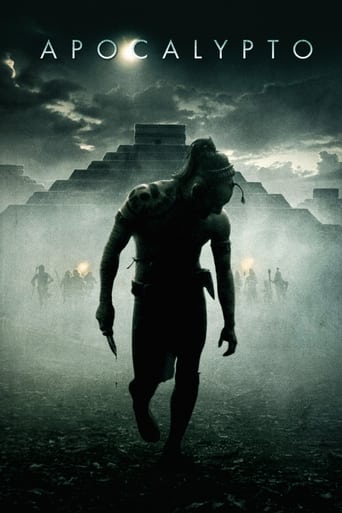
Reviews
Highly Overrated But Still Good
Awesome Movie
Instead, you get a movie that's enjoyable enough, but leaves you feeling like it could have been much, much more.
It's hard to see any effort in the film. There's no comedy to speak of, no real drama and, worst of all.
A generally excellent and very unusual blend of leading characters for a Civil War western is combined with an unusual and tension-filled script, released by Fox and directed by Robert Wise: neither much known for their westerns. This B&W film was released shortly after Jeff Chandler costarred as Apache chief Cochise, in the well- regarded "Broken Arrow". Here, he plays the fort commander(Major Kenniston), in a region of troublesome 'Indians', evidently in SE New Mexico, not far from the Texas border. This is a risky place to have sent a contingent of dyed-in-the-wool ex-Confederate cavalry prisoners-of-war, who reluctantly agreed to serve as Union cavalry in the West, as opposed to continued rotting in a prisoner camp. The war clearly had entered its terminal phase, as Sherman was manhandling Georgia. Historically, a policy was initiated early in 1864, which allowed Confederate POWs to be repatriated if they would serve as Union soldiers: labelled as 'galvanized Yankees'. About 7000 POWs took advantage of this offer, mostly sent to areas far removed from the major battles of the time. This meant mostly to areas of the West which were undermanned, due to the exodus to the East, and where Native Americans(NA) were troublesome. However, unlike in the film, they were assigned as infantry, not as cavalry, and most were sent to outposts far from unconquered Confederate territory, thus further reducing the incentive to desert.Getting back to this film, in addition to Chandler, as Major Kenniston, we have frequent leading men Cornel Wilde and Joseph Cotten, who hardly are thought of as western or soldier actors,but add their charisma as Union and ex-Confederate officers, respectively. Cotten is OK in his pivotal role; but I would have preferred Randy Scott: clearly a true southerner by his speech. We are very lucky to have beautiful, forceful, Linda Darnell as the lead female(Elena), scripted as the widowed Latino wife of Chandler's brother , killed in battle in the East. She's decided to tag along with Chandler for a while, until joining a wagon train for her California home. The chief supporting actors include the always charismatic Arthur Hunnicutt, who provides an element of gritty authenticity to the ex-Confederates that Cotten(as Lt. Tucker) cannot, and Jay Flippen, as his Yankee counterpart, as sergeant.In Major Kenniston, I see strong parallels with Colonel Thursday, in the prior "Fort Apache". Both despise the regional unpredictable Native Americans. Both make a fatal mistake in insulting them, and in underestimating their ability to take revenge on him and his command., and both pay the ultimate price for their folly. Major Kenniston actually is looked upon as a hero in his demise, suffering a fate similar to that of Jose Mendoz, in "Seven Cities of Gold", and Sir Robert, in "Hudson's Bay", for example. Cotten(Tucker) takes on John Wayne's role in "Fort Apache", more or less, while Linda takes on Shirley Temple's role. Some other aspects of the screen play resemble Ford's recent "She Wore a Yellow Ribbon". In contrast to most Hollywood westerns of this era, even the NA chiefs appear to be real NAs. The main war chief is named Satank, who was a real Kiowa war chief during this era. However, SE NM is rather far west and south of the Kiowa's homeland, being Apache country. Also, most of the NA have Apache-styled headbands. Confusing! Although Hollywood liked to include the occasional NA attack on army forts, in fact, such were very rare on well built forts. They were typically too lethal for the NAs, who couldn't afford to lose many warriors in battle, with their decimated populations. The battle scenes, both outside and inside the fort are rather well staged. Included is an extended shot of a soldier with his shirt burning, after struck in the back with a flaming arrow. I hope he had some good fire-proof insulation under his shirt!We learn that Kenniston(Chandler) spent some time in the Richmond Libby POW facility, from which he escaped, probably as part of the historic mass escape somewhat dramatized in the 1940 Civil War western "Virginia City". We also learn that Kenniston's brother(Elena's husband) was killed in a charge lead by Tucker. Kenniston holds a personal grudge against Tucker for this, as well as a general hatred of all rebels, be they Confederate or NA.During the course of the film, it becomes clear that all 3 of the main officers(including Wilde as Bradford) , have hopes of snaring Elena. It also becomes clear that Kenniston's persistent refusal to give her permission to leave has less to do with the NA threat than his desire to keep her near. However, she's not interested in him as a suitor. She's more accommodating with Tucker and Bradford(who is killed), but it's clear they are secondary to her ambition to return to her California homeland.(Reportedly, privately , Linda much preferred the company of Chandler)Near the film ending, after the attacking NAs have left and we learn that Sherman has completed his subjugation of Georgia, we have an informal friendly competition between the Yanks and former Confederates in singing "The Battle Hymn of the Republic" vs. "Dixie". There was a similar scene in the subsequent Civil War western "Column South", which has several other commonalities with this film, including being scripted as taking place in New Mexico. However, that story takes place just prior to the opening shots of the war, rather than near it's terminus.Linda Darnell reportedly hated being cast as a cowgirl, because she suffered from dust and horse allergies.
Two Flags West is directed by Robert Wise and adapted to screenplay by Casey Robinson from a story by Frank S. Nugent and Curtis Kenyon. It stars Joseph Cotten, Linda Darnell, Jeff Chandler, Cornel Wilde, Dale Robertson, Jay C. Flippen, Noah Beery Jr., Harry von Zell, Johnny Sands and Arthur Hunnicutt. Music is by Hugo Friedhofer and cinematography by Leon Shamroy."On December 8th, 1863, President Abraham Lincoln issued a Special Proclamation, whereby Confederate Prisoners of War might gain their freedom, provided they would join the Union Army to defend the frontier West against the Indians." A great premise drives this brooding yet action pumped Western forward, a production bolstered by crisp black and white location photography at San Ildefonso Pueblo, New Mexico, skilled direction by multi-genre director Wise and characterisations rich in thought and human interest value.Film essentially centres around the workings of Fort Thorn, a Union Army stronghold commanded by embittered Maj. Henry Kenniston (Chandler). As he takes delivery of a unit of Confederate prisoners from Rock Island Prison Camp, themselves commanded by Col. Clay Tucker (Cotten), he struggles to contain his distaste. Something which obviously isn't helping an already pressure cooker atmosphere as groups of men divided by the on going war, are expected to stand or fall next to each other against the looming presence of chief Satank and his army of braves.As the screenplay rolls on we learn about the main players beliefs and reasons for such, with the tragedy of the war deftly born out by the actors in their portrayals. The presence of widow Elena Kenniston (Darnell) also is cause for simmering tensions, where although an underwritten potential love triangle sometimes feels like a token offering on the edges of the frame, her character is so well drawn into the moody atmosphere, her back story packing emotional sting, that the film benefits from this case of testosterone lowering.In amongst the Fort's uneasy alliance there are devious plans afoot on both sides of the coalition, that is to be expected, for it would be pretty standard stuff if these guys all agreed to shake hands and get on with it. But again the screenplay delivers some well thought out scenarios where agents and spies come into play, the safe transporting of civilians away from the Fort throws up some spice, as does a desperate act of violence by Major Kenniston. It all builds to a head and then Wise unleashes his skills as a overseer of action.The crowning moment comes with the Indian attack on Fort Thorn. It's a prolonged attack filled with hundreds of extras and action aplenty. Each frame shot by Wise features flying bodies, arrows and bullets making their mark, fire raging in all parts of the ravaged Fort. Men, women and even children taking up the good fight as well, the Indian braves a fearsome and athletic foe coming in continuous waves. And this is not some Western where all the characters we have come to know are going to be singing come the end, some will die and it makes for dramatic and emotional impact.Great cast, great direction and a great screenplay, this definitely deserves to be better known and loved by those into Westerns/Civil War movies. 8.5/10
This is an action packed cavalry film set during the Civil War.It begins with our protagonist, Joseph Cotton's character, a Confederate officer rotting in a Union prison with 43 of his men. They are offered a chance to fight Indians in the West, an act guaranteed not to hurt the Southern cause. When Cotton's character puts it to a vote to his men, it is deadlocked 21-21, with the tying vote a dying man who passes away before he can voice an opinion.Cotton grabs the chance, and becomes a cavalry man, befriended by Cornel Wilde, a Union officer. Jeff Chandler plays the commander of the fort he is taken to. The star studded cast includes some great character actors, and their talents aren't wasted.At the fort, Chandler quickly becomes the antagonist. His character resembles Henry Fonda's commander in FORT APACHE, obviously on purpose. In ways, this is almost a remake as far as characters go, but with a different story line.A damsel in distress, the widow of Chandler's brother, killed in a battle in which Cotton took part, makes for high tension and high drama.Later on, Chandler captures the head honcho Apache's son, and when the Apache chief demands his son's release, Chandler kills the son.The other parts of the plot, I won't spoil. What we get are very identifiable three dimensional characters in great Western action. The fifties were the golden age for good reason. Great characters. This is a prime example. The two main antagonists both climax with acts of honor, one in supreme sacrifice, and one in relenting against a massacre for the sake of justice.Compare these characters to the one dimensional clichés of Leone debacles, cardboard cutouts who do nothing but hate and kill, of the caricatures of "Tombstone" and other garbage, and there's no comparison. This film is so superior, it boggles the mind.It took Hollywood four decades to realize their mistake, and now we at least see some Westerns that deal with credible characters, such as the ones you'll see Robert Duvall in. The difference is that this golden age dealt in splendor, scenery, and cinema, while the modern Western aims for total realism. While the modern Western has value, I still prefer the spectacle of cinematic glory and color to the modern dullness and dust. Both are good, but this type is more uplifting, and gives you the energy to get more done, so I give these films an edge.Excellent acting, great scenery, directing, everything you could want, but my two chief criteria, writing and characters, are both of high quality here, too. This film is an example of "great characters make great films".
Robert Wise, great director, made this film which sure looks like a John Ford, could have been a great film, and it would if it would depend only on Wise's direction, and on the cinematography of Leon Shamroy. But it misses out in the writing, somehow the story fails to reach the spectator like it should. It might be understandable for Confederate soldiers, realizing they might never come out alive, to change their uniforms for a common cause, the war against the Indians, specially as it might give them a chance to desert and go back home. Also to defend a fort where Major Kenniston (Jeff Chandler) provoked the attack by cruelly killing the Chief's son, they don't know about this brutal murder. But it prevents the spectator from identifying with Col. Clay Tucker (Joseph Cotten). Cotten's performance also does not help, he was a great actor, but not here. Chandler, on the contrary has a great performance. The film grabs your attention, it is good, but it could have been great.



